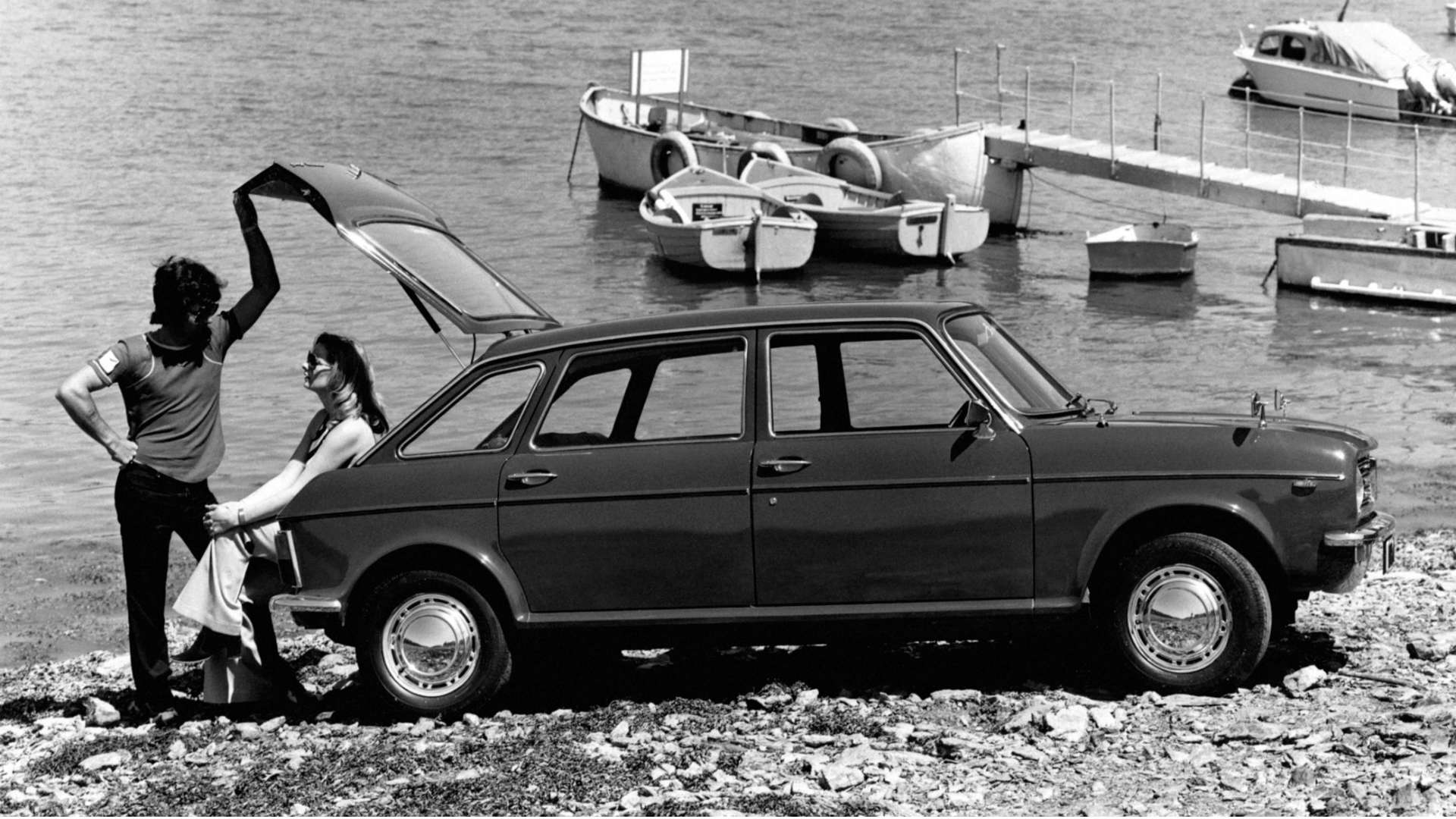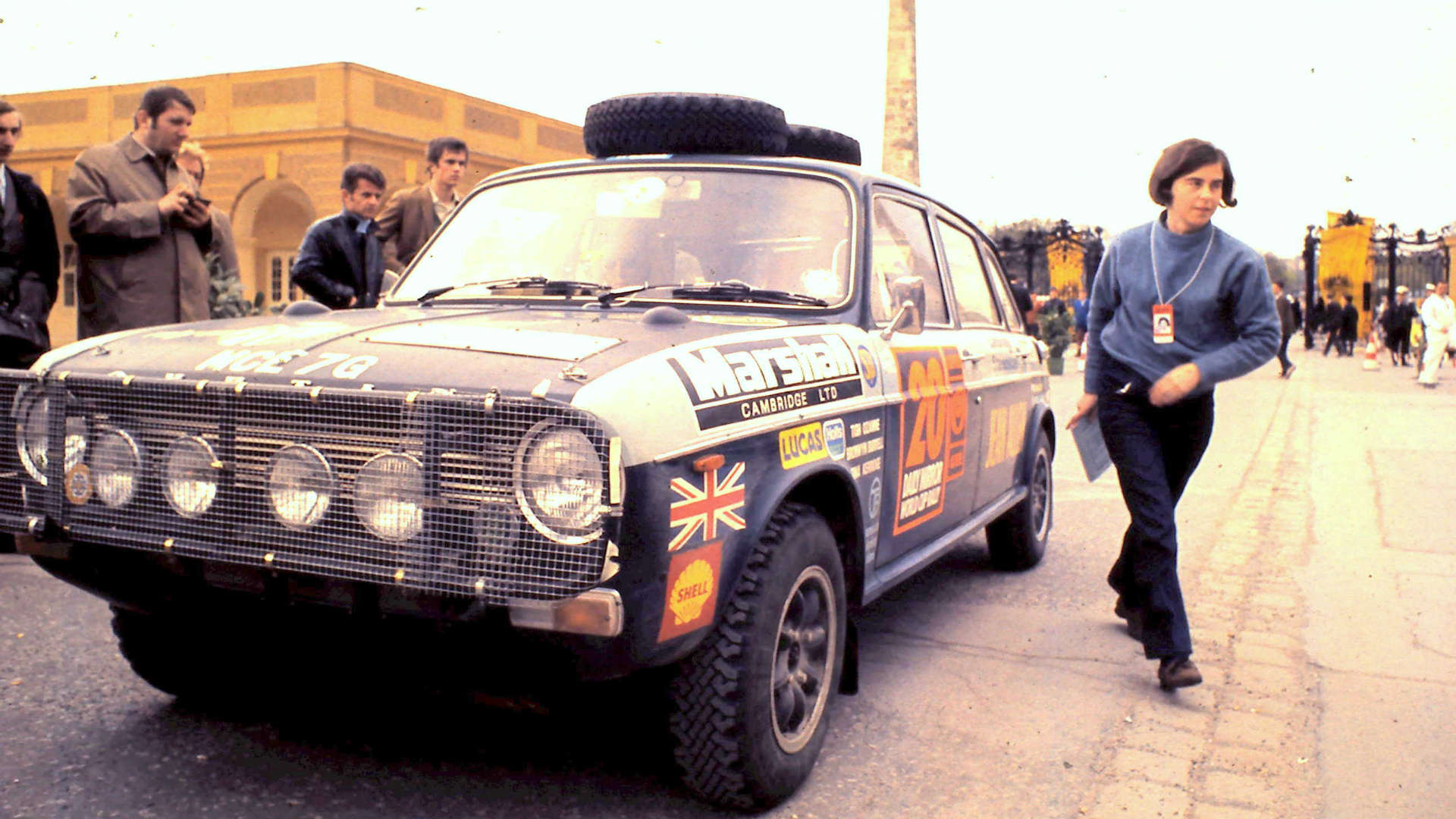“We believe that [the Austin Maxi] will create the same kind of revolution in the field of middle-class family motor cars as did the Mini in the realm of small cars.”
Those were the words of Lord Stokes, the newly installed head of the British Leyland Motor Corporation, when the Austin Maxi was launched in 1969.
In truth, even Lord Stokes didn’t believe it. Few people were talking about a revolution – some were questioning if the Maxi should even exist.

It could have, and probably should have, been a great car. Work on Project ADO14 began in 1965, when the British Motor Corporation (BMC) was dancing to the tune of the swinging sixties, fuelled by the global success of the Mini. A larger vehicle built on the same principles as the ‘Wizardry on wheels’ should have injected some magic into the family car class.
Minor, Mini and Maxi

However, while the world baked cakes and threw parties to celebrate 60 years of the Mini in 2019, there was silence regarding 50 years of the Austin Maxi. No parades, no cheese and pineapple on sticks, no cavorting in the Maxi’s rear seat. Not unless the owners’ club staged something we didn’t know about.
Things started well enough. Designed by Sir Alec Issigonis – the genius behind both the Morris Minor and Mini – the Maxi was a pioneering hatchback that had the potential to dominate a new market segment. Development started in 1965, just as Renault was demonstrating its ingenuity with the brilliant 16.
BMC spent £16 million on a new factory at Cofton Hackett to build the Maxi’s engine and gearbox, reportedly making it the biggest concentration of modern equipment in an area of comparable size anywhere in the motoring world. The Maxi couldn’t fail. Or so they thought.
An open and shut case

The problems started with a decision to lumber the Maxi with the doors from the Austin 1800 ‘Landcrab’. A door’s a door, and you might think that if they open and close correctly, it’s job done. An open and shut case, if you like.
But the doors compromised the Maxi’s styling, if not its packaging, leading to a look that was, at best, a little plain. A more appropriate description might be ‘ungainly’. It led to a succession of makeovers before the launch in 1969, with Roy Haynes giving it a front end that isn’t too dissimilar to the Mini Clubman.
Also, note the similarity of the grille and headlight arrangement to the Mk2 Ford Cortina – another Roy Haynes creation. You can see the influence of Haynes in the two recessed dials on the dashboard, too.
If the styling wasn’t about to set the automotive world alight, the Austin Maxi still had the potential to light customers’ fires. It was a five-door family hatchback, before the five-door family hatchback was a thing. It had a five-speed gearbox, when the British motorist was accustomed to only four ratios. And the interior was flexible enough for it to be considered an early example of an MPV.
Sadly, the development was beset with problems in the four years leading up to the Maxi’s launch in 1969. So much so, that when Lord Stokes took charge of the company in 1968, he considered cancelling the event.
Stokes brought in Harry Webster as technical director, with the Maxi top of the list of priorities for the former Triumph man. This list was long and included a woeful five-speed gearbox and a 1,485cc E-Series engine that simply wasn’t up to the task of moving the Maxi forward at a rate that could ever be described as ‘rapid’.
In response, Stokes ordered a new 1,748cc version of the E-Series unit, adding an additional £1 million to the cost of the development. It wouldn’t be ready in time for the launch, but it would give the Maxi a fighting chance of sales success.
The cable-operated gearbox was another issue. Julian Mounter, motoring correspondent for The Times, said: “It feels like stirring treacle with a long thin cane,” and this was after the engineers had fettled with the transmission.
Portuguese start

All of which meant the Austin Maxi debuted in Portugal in April 1969 with a long list of inherent faults and a feeling within BLMC that it would only be in production for a few years. It was underdeveloped and unloved. Not a great start for a new car.
Austin predicted a four percent market share, but by September 1969 the Maxi had secured just 2.2 percent. By the end of the year, this had fallen to 1.4 percent.
It’s not as though there wasn’t any initial enthusiasm for the product. BLMC claimed the order book at launch was enough for five months of production, but a series of stoppages led to delays and cancelled orders.
Production dropped from 2,000 a week to just a thousand by November 1969. The Maxi was looking like a case of maximum potential and minimum fulfilment. Something had to done, as it was in danger of becoming a white elephant with Landcrab doors.
The company acted swiftly. The car was improved, with less vibration on the move, increased sound-deadening and – most critically – an improved gearbox. BLMC also made an effort to re-educate and incentivise its dealer network, while 1.5 million potential customers were sent a mailshot.
It worked. By February 1970, the Maxi’s market share had risen to 2.2 percent, 2.5 percent in March and 3.0 percent in April. It looked like BLMC had secured victory from the jaws of defeat, but in reality the Maxi never managed to recover from its poor start.
In October 1970, the Maxi received the engine it had always deserved, when the 1,750cc unit was added to the range. A couple of years later, the twin-carb Maxi High Line (HL) arrived, with more power and a host of interior and exterior upgrades.
The car could finally hold its own and sales settled at 20,000 to 30,000 a year throughout the 1970s. There’s a sense that British Leyland focused its efforts on the Morris Marina, leaving the Maxi to its own devices, with the Maxi 2 seeming like a token effort before production ceased in July 1981.
Faulty to Fawlty

In total, just under half-a-million Maxis were produced over a 12-year period, a poor return for a car that had the potential to be a million-seller. For some context, the Renault 16 achieved 1,851,502 sales between 1965 and 1980.
The Maxi wasn’t quite as revolutionary as the 16, but it featured a low, unobstructed tailgate opening, a flexible seating arrangement and generally good ride and handling characteristics. It’s also worth noting that, although the Maxi was shorter and lighter than the original Ford Focus, it offered more space inside.
There were high points. Four Maxis were entered into the 1970 London-Mexico World Cup Rally, while the Downton Engineering Stage 2 conversion created what was, by all accounts, a very good car. It was also given a good thrashing by Basil in Fawlty Towers.
The general apathy is perhaps best summarised by two contemporary reviews. At its launch in 1969, Motor Sport said: ‘The Austin Maxi is the best-yet of the transverse-engine BMC models, but it is not sufficiently revolutionary to merit all the ballyhoo that preceded it’.
Two years later, following the launch of the 1,750cc version, CAR magazine said: ‘The changes to the Maxi have turned it from a bad car into one that is acceptable as a practical family vehicle’. Both comments are pretty damning with faint praise.
Raise your glasses

In many ways, the Austin Maxi doesn’t deserve to be lumped in with the usual suspects when folk start talking about the downfall of the British motor industry. The last vehicle designed by Alec Issigonis was a good car waiting to get out. It was just poorly marketed, misunderstood and not as good as the rival Renault 16.
Sure, raise a glass to celebrate the Mini, but let’s raise a tailgate to the much-maligned Maxi. It might not deserve a street party, but it must be worthy of a few parish notes in passing.
Here’s to you, Austin Maxi, and all those who travelled happily in your cavernous and comfortable cabin.
With grateful thanks to AROnline and the Austin Maxi Owners Club.
ALSO READ:
1983 Austin Metro review: Retro Road Test



“It also appeared as Basil’s motor in Fawlty Towers” – nope, that was the Austin 1100. It did appear in National Lampoon’s European Vacation, though, and in the 1969 series of Endeavour it was the first car seen in Ch Supt Bright’s road safety film. And John and Yoko crashed in one in northern Scotland.
Thanks for sharing these, David!
Basil’s famous car (that received a ‘damn good thrashing’ in Gourmet Night) was indeed an Austin 1100 Countryman. However, in the second series this had in fact given way to a Maxi and was even quoted as such in the episode ‘The Anniversary’ :
“I just saw Sybil in a car in town”
“That’s not Sybil, it’s that woman who looks slightly like Sybil!”
“Drives a red Maxi does she Basil?”
I had two of them the first with the awful gearbox and the second was an excellent car.. No one mentioned that the front seats folded flat and the back seat folded down creating a king sized bed. Useful as a passion wagon or a genuine overnight break on a long trip. excellent car.
It was a car my family had when I was born. It thara time here was socialist Yugoslavia. It was a closed market with astronomic custom duties on foreign cars. But cars which were assembled from kits in the country had no custom duties and they were just a fraction of price of a standard western car. So, in one factory in Slovenia they assembled Maxi 1500 and my family had the car.
It was excellent car. Never again such a car. Hydrolastic low suspension was premium for bumpy and curvey yugoslav roads, especially if you do 60.000 a year on local roads. The car made in 10 years 600.000 km. Bonnet was opened just to add oil and water, very rarely to change oil, spark plugs and other service. My father was not a fan of ordinary maintenace so he neglected the mechanics heavily. 600.000 km! the car was indestrucible. Cable gearbox was the only nuissance.